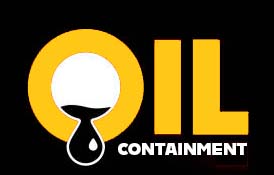In the oil industry, preventing spills and leaks is crucial for the protection of the environment and human health. One key component of spill prevention is the use of containment barriers to provide secondary containment. These barriers play a vital role in containing and controlling leaks, ensuring that any spills are contained and do not spread to sensitive areas. In this article, we will discuss how to properly create containment barriers in the oil industry to effectively protect against spills and leaks.
Understanding the Importance of Containment Barriers
Containment barriers are essential for preventing spills and leaks from damaging the environment and causing harm to workers. These barriers are designed to contain any leaks or spills that occur, preventing them from spreading and causing further damage. By creating effective containment barriers, oil companies can minimize the impact of accidents and protect the environment and surrounding communities.
Choosing the Right Material for Containment Barriers
When it comes to creating containment barriers in the oil industry, choosing the right material is crucial. Polyurea is a popular choice for containment barriers due to its durability, flexibility, and resistance to chemicals. Polyurea is a fast-setting material that can be applied quickly and creates a seamless barrier that is resistant to leaks and spills. Additionally, polyurea is highly resistant to abrasion and UV exposure, making it an ideal choice for outdoor use in the oil industry.
Proper Installation of Containment Barriers
Proper installation of containment barriers is essential for ensuring their effectiveness in preventing spills and leaks. Before installing a containment barrier, it is important to thoroughly clean and prepare the surface to ensure optimal adhesion of the barrier material. Any cracks or damage to the surface should be repaired before applying the containment barrier to prevent leaks or seepage.
When applying polyurea as a containment barrier, it is important to follow the manufacturer’s instructions for mixing and application. Polyurea should be applied in a consistent thickness to create a seamless barrier that is free from weak spots or gaps. Proper curing and drying times should also be followed to ensure the barrier is fully functional and ready to contain any leaks or spills that may occur.
Regular Maintenance and Inspections
Once containment barriers are installed, regular maintenance and inspections are essential for ensuring their effectiveness in preventing spills and leaks. Inspections should be conducted regularly to check for any signs of damage or wear and tear on the containment barrier. Any issues should be addressed promptly to prevent leaks or spills from occurring.
Regular maintenance, such as cleaning and resealing the containment barrier, can help extend its lifespan and ensure it continues to provide effective secondary containment. By properly maintaining and inspecting containment barriers, oil companies can minimize the risk of spills and leaks and protect the environment and surrounding communities.
Conclusion
Creating effective containment barriers in the oil industry is crucial for preventing spills and leaks that can cause harm to the environment and human health. By choosing the right materials, properly installing containment barriers, and conducting regular maintenance and inspections, oil companies can minimize the risk of spills and protect against environmental damage. Polyurea is a popular choice for containment barriers due to its durability and resistance to chemicals, making it an ideal choice for use in the oil industry. By following best practices for creating containment barriers, oil companies can protect against spills and leaks and ensure the safety of workers and the environment.
